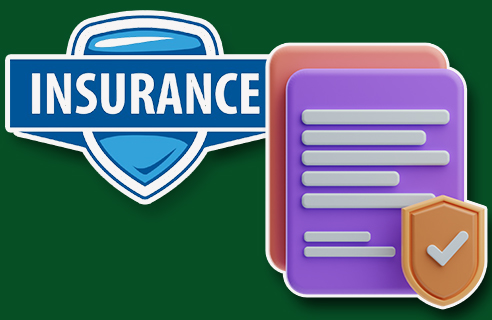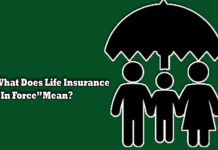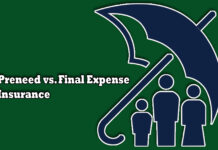HO-3 insurance is a type of home insurance coverage plan that is usually provided by most private property insurers. This policy provides coverage for your home’s structure, your personal belongings and your liability in case of any damage or injury.

These types of policies are usually made available for single family homes. However, in some cases, some townhouses and family homes may require this type of coverage. One thing the HO-3 does is owning and residing in the dwelling and needing to protect the home’s entire structure.
Although, HO-3 policies are made to cover your home and your personal belongings, policyholders should know of the difference in how they provide coverage. Your home and it structures are under the “All risk” or open” perils coverage. Open perils offer coverage for any type of disasters unless they are removed or excluded in your policy. However, your belongings fall under “named perils. Named perils offer coverage for any losses named or listed in your policy.
HO-3 Homeowners Insurance: Key Coverage Types
Generally, Ho3 insurance policies include six main types of coverage common to most Homeowners insurance forms. Below is a simple breakdown of what you need to know:
Dwelling Coverage
This covers your home’s structure and attached structures repairs costs. Typically, Claims are paid based on replacement cost, not depreciation, up to the limits of the policy. For instance, if purchase a policy for $200,000, coverage for other structures is usually up to $20,000. This means it is the 10% of the dwelling coverage.
Other Structures Coverage
This includes detached structures such as garages, driveways, sheds, and fences. The typical coverage limit is 10% of the dwelling coverage. However, it can adjusted with your insurance provider.
Personal Property Coverage
This helps cover the cost of personal belongings and items such as clothing and furniture that is damaged by covered perils. You should know that, Coverage limits are usually 50-70 percent of the dwelling coverage.
Liability Coverage
This helps to provide financial protection if you or a family cause bodily injury or property damage to others. It covers incidents on your property and, in some cases this coverage can cover beyond your home premises.
Medical Payments Coverage
This helps to pays for a guest’s medical expenses if they are injured at your home, regardless of who is to be blamed.
Additional Living Expenses
This helps to covers costs like hotel stays, food, laundry, and parking if your home is damaged by a covered peril and you need to relocate to another location temporarily. Usually, The coverage limit is about 20-30 percent of the dwelling coverage.
Personal Property Coverage Specifics:
Keep in mind that, HO-3 policies cover personal property on a named-perils basis, meaning only specific perils listed in your policy are covered. Just so you know, there are 16 named perils. And the Common perils include:
- Fire
- Windstorms
- Accidental water damage
- Theft
- Weight from ice and snow
- Vandalism
- Explosions
- Freezing pipes
Personal property claims are typically paid depending on actual cash value (ACV), which factors in depreciation. If you want replacement cost value (RCV) for your personal items such as clothing, furniture, and appliances, you can easily include a personal property replacement cost endorsement to your policy. Keep in mind that, this optional coverage will increase the premium by about 10%.
By understanding these coverage types and options, you can design your HO-3 policy to match your budgets and needs
What Does the HO-3 policy exclude?
Although, this policy covers your home on an open perils bases, it won’t cover every events and damages. Below are some of the exclusions;
- Earthquakes
- Floods
- Sinkholes
- Sewer backup
- Government intervention
- Wear and tear
- Lack of maintenance resulting to damages
- Pets or Rodent Infestation
- Mold, Rust or Corrosion
- Pet Damages
Depending on your location, it is advisable to purchase additional coverage to your HO-3 policy. For example, if your home is in California, you should consider buying earthquake insurance. if you stay in a location prone to flooding and hurricanes, purchasing a flood insurance can help you save a lot.
Why You Need HO-3 Coverage
Homeowners need to have this HO-3 insurance for financial protection against damage to their home’s structure from any sort of natural disasters such as theft, or fire. This policy also includes liability protection for unexpected injuries that occurs on your property.
This coverage protects your personal belongings, helping you cover the cost of replacements or repairs. Because it offers multiple layers of protection, mortgage lenders often mandate it to protect both your personal investment and theirs.
Types of Home Insurance
Just as we have different types of homes, there are various home insurance policies, and every one of them offers different coverages.
- HO-1: This is the most basic policy and it is usually for older homes at high risk for claims. It helps to cover the home structure, attached structures, appliances. And installed items like carpets, on a named-perils basis.
- HO-2: This literally includes everything in HO-1, with added limited liability protection. Also, it covers detached structures, personal property, and loss of use. Just so you know, this is a named-perils policy.
- HO-4: Typically designed for renters, this policy covers personal belongings and liability protection, as well as additional living expenses and guest medical payments. There is no coverage for the building structure. This policy is also a named-perils policy.
- HO-5: This policy is very similar to HO-3. However, it’s protection is wide by covering your home and it items on an open-perils basis. It sometimes includes extra coverage for expensive personal belongings such as jewelry and is typically for high-value homes.
- HO-6: Mainly available to condo unit owners and some townhome owners, covering from the studs into the unit. The exterior is usually covered by a separate HOA master policy. This policy works similarly to an HO-3 policy.
- HO-7: This insurance policy covers mobile, modular, and manufactured homes. The structure is covered on an open-perils basis, while personal belongings are insured on a named-perils basis. Also similar to an HO-3.
- HO-8: For historic or architecturally significant homes that cannot easily be replaced. The Coverage is similar to HO-3, but claims are paid on a named-perils basis.
Each policy type helps to offer various protections designed to different living situations and property types.
HO-3 vs. HO-6 Insurance
Just as mentioned above, An HO-3 policy is for standard homes, while an HO-6 policy is for condos. Both types of policies offer coverage for personal property, liability, and additional living expenses. The main difference depends on your dwelling is being covered.
For condos, the landlord’s master policy usually covers the building’s structure, foundation, and common places such as the gym or lobby. HO-6 insurance, also known as “walls-in” coverage helps to protect your individual unit and the belongings in it. Both policies exclude certain events and situations, such as damage from flooding and earthquakes.



